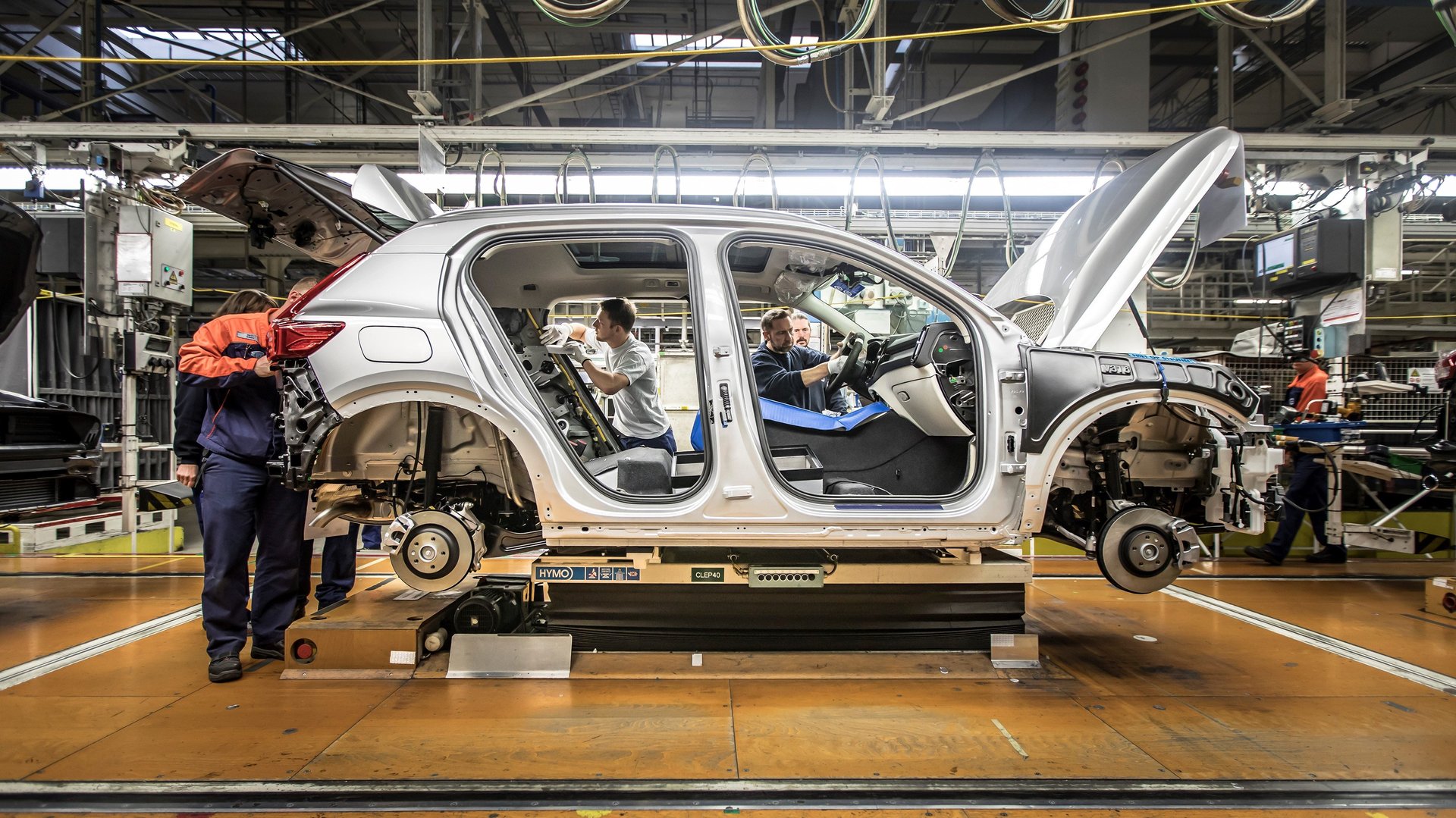Volvo wants to beat other automakers to climate-friendly steel
The biggest climate problem with cars is tailpipe emissions. Fortunately, the electric vehicle industry is booming; a June 10 forecast by Bloomberg predicts that by 2030 at least 34% of new cars sold globally will be zero-carbon, even without any new policies to speed the transition (and at least 58% with more aggressive government support). That’s up from just 4% in 2020.


The biggest climate problem with cars is tailpipe emissions. Fortunately, the electric vehicle industry is booming; a June 10 forecast by Bloomberg predicts that by 2030 at least 34% of new cars sold globally will be zero-carbon, even without any new policies to speed the transition (and at least 58% with more aggressive government support). That’s up from just 4% in 2020.
But even if every car was powered by electricity produced by solar panels and wind turbines, automakers would still have a major carbon footprint, thanks to their reliance on the notoriously carbon-intensive steel industry. Now, the transition to green steel is getting a big push from Volvo, which announced a deal on June 16 to become an anchor customer for a cutting-edge low-carbon steel factory in Sweden.
Why steel has a large carbon footprint
Steel production needs a lot of coal, which for the past thousand years been the only way to produce temperatures high enough for smelting iron. The industry has been slow to develop cleaner alternatives, and remains responsible for 7-9% of all greenhouse gas emissions. And steel production accounts for about one-third of the emissions from manufacturing and assembling a typical car.
Under the deal, Volvo will purchase steel made by the manufacturer SSAB at its experimental HYBRIT factory, which claims to be the first in the world to use hydrogen rather than coal as the furnace’s fuel source, with the hydrogen in turn produced using zero-carbon electricity from wind farms and hydro dams.
The plan is still in its early days: the HYBRIT factory won’t be running at full commercial scale until 2025, and Kerstin Enochsson, Volvo’s head of procurement, said the automaker will need until that year to roll out a pilot fleet of cars made from the new steel and make sure they’re up to snuff. Until then, new Volvos will be made with the same old steel.
It’s still early days for green steel
Still, landing Volvo as one of HYBRIT’s first big customers will do much to build momentum around the nascent field of industrial green hydrogen at a time when the technology is still working out kinks and proving itself to investors, says Nate Aden, a senior associate at the World Resources Institute’s Business Center. The Volvo-SSAB deal “could provide an essential commercial proof of concept for this technology,” he said. “This would be huge in terms of demonstrating its viability and scalability.”
Five out of the world’s top six steel producers, including China’s Baowu Steel Group, have committed to reach net zero carbon emissions by 2050. Their options for getting there are limited: Get better at recycling existing steel, increase factory efficiency, capture emissions from smokestacks, or scale up alternative fuel sources like biomass or green hydrogen, Aden says.
The last is most promising in terms of emissions reductions, he said, but faces a few key obstacles. It requires a huge amount of electricity, for one thing. Sweden’s relative abundance of hydro and wind are what made the HYBRIT plant viable, and in the first quarter of 2021 several other steelmakers in renewables-rich European countries have announced plans to explore hydrogen. But according to Enochsson, fully eliminating steel emissions from Volvo’s global production lines would only be possible if Asia and the US catch up to Europe on large-scale renewables.
That thirst for electricity could make green steel more expensive than conventional steel in some places where coal is cheap. A 2020 report by the Rocky Mountain Institute, a nonprofit energy think tank, found that the plummeting cost of solar and wind has already made the technology cost-competitive in some markets, including the US, and will likely become more so in China as the country steps up its new carbon cap-and-trade market. But in Europe, where the cost of electricity is relatively high, green steel may not be cost-competitive until the mid-2030s, said Flor Lucia de la Cruz, a senior research analyst at energy research firm Wood Mackenzie.
That’s a problem, de la Cruz said, because global green steel production needs to scale up by orders of magnitude in order to reach the volume of production needed for the industry as a whole to reach net zero emissions. According to Bloomberg, just two megatons of green hydrogen are produced annually today, and used in ammonia plants, petroleum refineries, and other facilities besides steel, whereas 122 megatons are needed for steel alone by 2050.
‘Lighting a fire’ under Tesla
The timing of the Volvo announcement is auspicious, coming just a few months ahead of COP26, the global climate summit, in Glasgow in November, when the EU, US, and other governments are expected to announce new incentives for green hydrogen. The more big steel consumers sign on, the greater the pressure on their competitors to follow suit—and the faster the industry will be able to scale up.
“It’s great that HYBRIT is happening, but it will still take decades to have a significant impact on emissions from steel production,” Aden says. “But what this will really do is light a fire under Tesla and other automakers who are claiming to make green vehicles.”